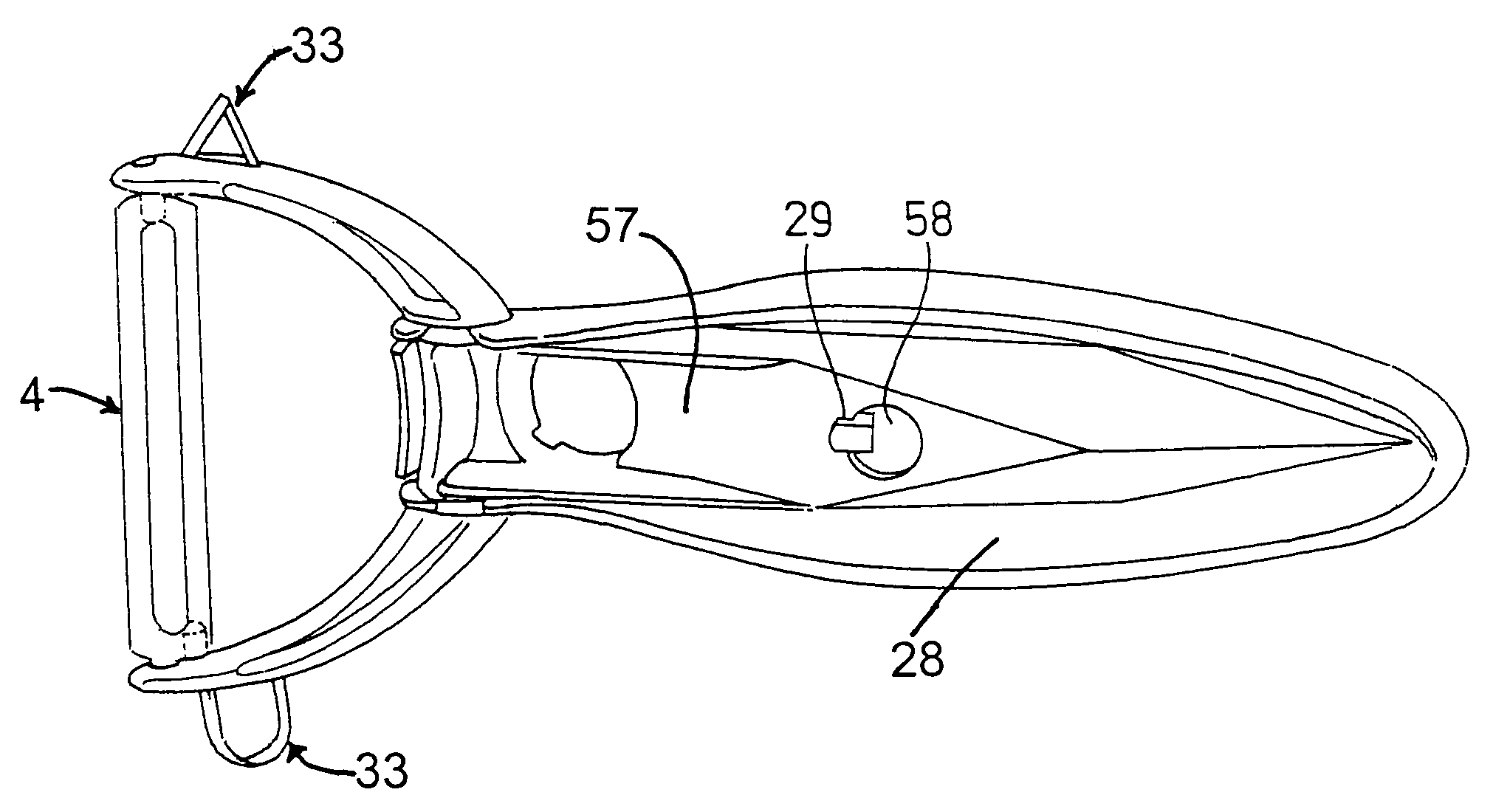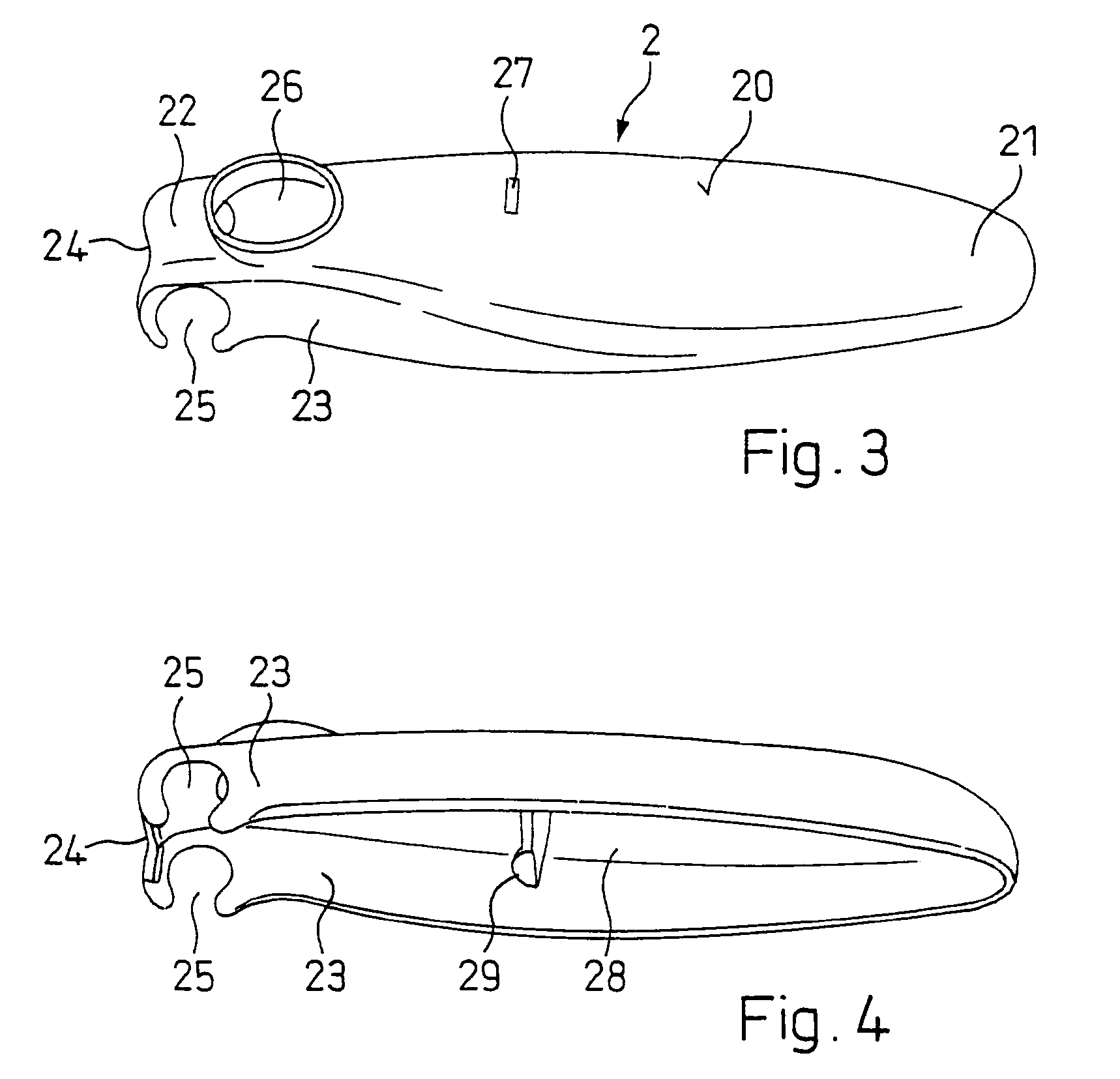Low-waste peeler
a peeler and low-waste technology, applied in the field of peelers, can solve the problems of inadequate auxiliary tools, limited utility of kitchen utensils, and inability to use low-waste peelers for any other purpose,
- Summary
- Abstract
- Description
- Claims
- Application Information
AI Technical Summary
Benefits of technology
Problems solved by technology
Method used
Image
Examples
Embodiment Construction
[0032]A low-waste peeler 1 of the present invention is shown in FIG. 1. The peeler comprises an elongate grip 2 and a fork-like mounting 3 pivotally and movably connected to the grip 2. The elongate grip 2, as shown in FIG. 3, has a convex, anatomically shaped surface 20. The surface 20 may be ergonometrically embossed. The grip 2 is provided with two side walls 23 running approximately parallel to a longitudinal axis of the grip 2. The side walls 23 are arranged on grip 2 so that they are parallel and opposite to one another. The rear region 21 of the grip 2 has an approximately rounded end, while the front region 22 of the grip 2 merges into the side walls 23. The front region 22 is provided with a front end-face 24, which forms a claw-like termination that points generally downwards. As shown in FIGS. 3 and 4, the side walls 23 are provided with two openings, also referred to as bearing claws 25, wherein more than half of the openings is closed around the perimeter. These two bea...
PUM
 Login to View More
Login to View More Abstract
Description
Claims
Application Information
 Login to View More
Login to View More - R&D
- Intellectual Property
- Life Sciences
- Materials
- Tech Scout
- Unparalleled Data Quality
- Higher Quality Content
- 60% Fewer Hallucinations
Browse by: Latest US Patents, China's latest patents, Technical Efficacy Thesaurus, Application Domain, Technology Topic, Popular Technical Reports.
© 2025 PatSnap. All rights reserved.Legal|Privacy policy|Modern Slavery Act Transparency Statement|Sitemap|About US| Contact US: help@patsnap.com



